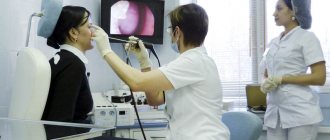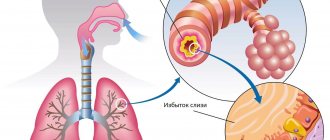Every adult has encountered the diagnosis of “otitis media”: if he was not sick himself, then he treated his child for the disease.
“Otitis” is a collective concept that characterizes the course of the inflammatory process in the ear.
Any of its parts can become inflamed. The structure of our ear is not as simple as it seems. This is a complex mechanism that performs an important function. It consists of three parts: the outer ear, the middle and the inner.
The outer is the visible part of the ear. We most often think of the auricle when we mean the ear. Although its role in the complex process of sound perception is minimal. It only picks up sound waves and transmits them further to the middle section. The outer ear is separated from the middle ear in adults and children by the eardrum.
The middle section is responsible for sound transmission. The eardrum transmits sound vibrations into the tympanic cavity, where they are amplified. The auditory ossicles are located here: the malleus, the incus and the stapes. The malleus is connected to the eardrum. The sound wave bends the eardrum, and this vibration is transmitted to the hammer, and from it, further along the chain from one auditory ossicle to another, the signal is transmitted to the internal part of the hearing organ.
The inner ear is located in the temporal bone and is a collection of canals. Due to its similarities, it is also called a labyrinth. Hair cells are located in these channels. Each specific cell perceives a certain frequency of sound. Hair cells pick up sound vibrations and convert them into nerve impulses. The impulse is sent directly to the brain.
Inflammation can affect each of the three parts of the ear; accordingly, there are three types of otitis media: external, middle or internal.
Adults and children, for the most part, have to deal with otitis media.
Make an appointment right now!
Call us by phone or use the feedback form
Sign up
Types of otitis media
Inflammation of the middle ear in adult patients and in childhood can occur in acute and chronic forms. Acute otitis media begins, as a rule, suddenly: with unpleasant sensations in the ear, which increase over a short period of time, the pain becomes more intense. An adult patient describes his condition as follows: “There’s a shooting in the ear!” If the disease begins in a child, the baby begins to scream furiously and fiddle with his ear. Pus accumulates in the ear. Only when the eardrum ruptures and purulent contents exit the middle ear cavity does relief occur.
With chronic otitis media, the signs of the disease are less pronounced. Chronic otitis media is more sluggish. The diagnosis is made when the disease lasts from six to ten weeks in an adult or child or exacerbations recur more than four times a year.
Otitis media usually manifests itself as a complication of other infectious diseases.
Chronization begins mainly in cases where treatment of the middle ear for acute otitis was untimely or was carried out with incorrectly selected medications.
Another mistake in the treatment of acute otitis is the incorrect use of drugs, when adult patients, having felt relief, stop taking medications. And an incomplete course of taking medications is a direct path to chronicity of the inflammatory process. Therefore, the disease should be treated fully by contacting an ENT doctor in time.
Causes of chronic otitis media.
Catalysts for exacerbation of a chronic disease can be:
- infectious diseases;
- chronic diseases of the ENT organs (rhinitis, sinusitis);
- prolonged nasal congestion;
- adenoids;
- damage and trauma to the ear;
- eustachitis;
- enlarged nasal turbinates;
- weak immunity;
- lack of vitamins;
- hypothermia;
- improper ear hygiene.
It is much easier for children to get sick - the Eustachian tube connecting the nasopharynx to the ear is very short, so the infection easily penetrates from the nasal cavity to the ear cavity.
Provoking factors can be improper blowing of the nose or rinsing the nose at home, for example, with sinusitis, when, due to inept actions, the infection penetrates into the ear, causing inflammation there.
To prevent exacerbation of chronic otitis, it is necessary to contact an otolaryngologist in time and treat the cause of the disease.
Causes of chronic suppurative otitis media (CSOM)
Chronic purulent otitis media is the result of an advanced form of acute otitis media or its insufficient treatment, in which the formed post-inflammatory changes in the mucous membrane and structures of the middle ear contribute to the chronicity of the process. Persistent damage to the integrity of the eardrum can be caused by a number of other external factors, including chemical exposure or mechanical damage due to injury.
The development of CHSO is caused by various factors, including a decrease in the general immune status of the body, the presence of concomitant diseases of the body, virulent strains of pathogens resistant to antibacterial drugs, disruption of reparative processes, dysfunction of the auditory tube, etc. The development and maintenance of CHSO can also be facilitated by a deviated nasal septum, the presence adenoid vegetations.
Symptoms
Due to the sluggish course of the disease, adult patients do not always realize that they have problems until they notice problems with hearing or the exacerbation phase begins. Symptoms in the chronic form:
- pain in the affected ear, worsening at night;
- hearing loss;
- elevated body temperature in the absence of other cold symptoms;
- purulent discharge from the ear canal in a purulent form, sometimes the discharge produces a foul odor;
- noise in ears;
- headache;
- If purulent otitis media has developed, the adult patient is haunted by the feeling that fluid is overflowing in the ear.
Chronic disease occurs in waves: periods of exacerbation are followed by periods of rest (remission).
During an exacerbation, children become lethargic, capricious, and their performance at school decreases.
During remission, symptoms subside. The patient may note that his hearing has decreased. But a person quickly gets used to this state.
If the disease is not treated at this stage, the consequences can become much more serious. Inflammation can affect the labyrinth of the ear. If the purulent process spreads to areas of the brain, meningitis may develop.
If left untreated, the disease gradually destroys the auditory ossicles and, as a result, leads to severe hearing loss. It will be impossible to completely restore your hearing.
Friends! Timely and correct treatment will ensure you a speedy recovery!
Symptoms of mesotympanitis
Chronic mesotympanitis can be identified by constant noise and pulsation in the ears, periodic pain in the ear, hearing loss and purulent discharge from the ear for several months.
Symptoms are accompanied by constant elevated temperature (from 37.5 degrees), enlargement of lymph nodes close to the affected ear, and intoxication (nausea, headaches and dizziness).
As a rule, the disease develops in only one ear. Right-sided mesotympanitis is diagnosed when the right ear is affected. The disease of the left ear is called left-sided mesotympanitis.
The disease is dangerous due to complications that arise if you do not consult a specialist in a timely manner. It can provoke severe chronic diseases in all parts of the ear, as well as “migrate” to the other ear (bilateral mesotympanitis), into the oral cavity, nose, brain, skull bones and even internal organs.
Types of chronic otitis
There are two types of chronic otitis: mesotympanitis and epitympanitis.
In the first case, the inflammatory process covers the mucous membrane of the middle ear and the eardrum. Perforation in the tympanic membrane occurs approximately in its center. The membrane itself thickens and becomes covered with pus. Purulent processes do not subside. Polyps form on the mucous membrane, which periodically bleed. The tympanic cavity gradually fills with pus, which provokes the destruction of the auditory ossicles and a gradual decrease in hearing.
Epitympanitis is a more severe manifestation of chronic inflammation. It affects not only the mucous membrane, but also bone tissue. The perforation in the eardrum is located close to its edge. Benign tumor-like formations are formed - choleastomas. Choleastomas and polyps block the tympanic cavity. The release of pus becomes difficult. As they grow, choleastomas begin to grow into the bone tissue, gradually destroying them. This type of inflammation affects the cranial bones, labyrinth of the ear and brain.
The consequences of this condition are quite serious, so there should not even be any doubt about whether to treat or not treat this disease.
Pathogenesis
HSOM is more common in countries (regions) with low socio-economic development and may be associated with inadequate treatment of acute otitis media (AOM), poor hygienic conditions and nutrition, and high levels of tobacco consumption in the population.
In children, chronic ear disease is often caused by repeated episodes of acute perforated otitis media (AOM).
The transition of AOM to a chronic form is determined by a period of two weeks to three months; the exact time of transition remains a subject of dispute among various researchers.
The inflammatory process during AOM can pass from serous (exudative otitis media) to purulent. With purulent inflammation in the middle ear, positive pressure increases, the auditory tube does not have time to balance it, and when the tensile strength of the ear tube is exceeded, it ruptures - purulent discharge begins to flow into the cavity of the outer ear. This purulence from the ear is called otorrhea. If episodes of otitis media recur before the PD heals, the perforation becomes chronic (persistent). The edges of the perforation become covered with epithelium, which then prevents its closure.
Perforation of the BP can be located in the tense part of the BP (a more favorable variant of CGSO) or in the non-tense part (more often associated with cholesteatoma, has a malignant course).
Primary acquired cholesteatomas most often arise as a result of prolonged dysfunction of the eustachian tube (due to upper respiratory tract infection, seasonal allergic rhinitis, nasopharyngeal neoplasms, and in children - adenoid hypertrophy). Long-term negative pressure in the middle ear and retraction of the eardrum against this background leads to the formation of a pocket, which appears behind the eardrum. Due to the inflammatory process, keratinized epithelial scales accumulate in the pocket, from which cholesteatoma is formed.
Secondary acquired cholesteatoma develops against the background of existing perforation of the BP. The epithelium migrates through the defect of the tympanic membrane into the space of the middle ear, which leads to the formation of cholesteatoma.
Cholesteatomas increase in size, destroying surrounding structures, leading to erosion of the middle ear ossicles and hearing loss. The bacterial process in the area of cholesteatoma also contributes to bone destruction.
Diagnostics
Timely diagnosis will help prevent the development of complications and start treatment of chronic otitis in a timely manner. If signs of the disease occur, you should make an appointment with an otolaryngologist for diagnosis and effective treatment.
To make a diagnosis, the following is carried out:
- otoscopy (standard examination of the hearing organ);
- blood analysis;
- if necessary, radiography or computed tomography;
- culture of discharge from the ear canal;
- audiometric study to determine the degree of hearing loss.
In the diagnostic process, it is necessary to differentiate mesotympanitis from epitympanitis. This is important when prescribing competent treatment.
How to treat the disease?
Chronic otitis media is treated conservatively or surgically, depending on the type of inflammation.
Conservative treatment includes the use of medications, rinsing the ear from purulent accumulations and physiotherapeutic procedures.
Treatment is carried out on an outpatient basis except in clinical cases when there are life-threatening complications or the patient is young (up to 2 years). Indications for the need to treat otitis in a hospital are meningitis, facial paralysis, and brain abscess. If otitis media is not treated, the following may develop: thrombosis, sepsis, mastoiditis. You can also permanently lose your hearing.
Drugs for the treatment of otitis, as well as a complete treatment regimen, are prescribed by an otolaryngologist based on their clinical picture, because mesotympanitis and epitympanitis are treated differently.
Treatment of mesotympanitis
Mesotympanitis is the mildest form of chronic inflammation. Therefore, therapy for this diagnosis is conservative - the disease is treated with medications.
The first stage of therapy is to stop the discharge of purulent masses. For this purpose, the ear cavity is washed. Before rinsing the ear with medications, the ENT doctor cleans the auricle, then cleans the ear canal with a probe, and cleans the middle ear. At the end of all these manipulations, medications are injected into the ear. Antibacterial, anti-inflammatory, and antihistamine drugs are injected into the washed ear.
To restore the integrity of the tympanic membrane, physiotherapeutic procedures are carried out. The complex of physical procedures includes ultraviolet irradiation, laser therapy, ultrasound and photodynamic therapy sessions. To restore hearing, treatment is carried out using electrical pulses in combination with infrared laser radiation using the Audioton apparatus.
In combination with drug therapy, physiotherapy relieves inflammation and the symptoms of the disease disappear.
In those rare cases when conservative therapy does not help, it is necessary to open the tympanic cavity surgically and then perform plastic surgery of the tympanic membrane.
Stages of mesotympanitis
There are three stages of purulent mesotympanitis (synonymous with chronic):
- latent, when the symptoms are weakly expressed, unclear and do not cause much discomfort to the patient;
- acute stage - begins with prolonged exposure to factors that weaken the body, at which time the most pronounced signs of the disease are observed, including purulent discharge;
- remission - occurs after a course of treatment, which temporarily restores hearing and heals the ear.
Treatment of epitympanitis
This form of the disease initially requires surgical intervention. The presence of choleastomas and affected bone tissue is a direct indication for surgical intervention. The intervention is contraindicated for elderly people and patients with heart pathologies and kidney diseases.
The operation is performed under general anesthesia through an incision behind the ear. During the operation, purulent accumulations, affected areas of bone tissue, polyps and choleastomas are removed from the tympanic cavity. If the malleus, incus and stapes are partially destroyed during the course of the disease, prosthetics are performed.
Postoperative rehabilitation therapy does not require a long hospital stay. Dressing changes and restorative procedures can be performed on an outpatient basis in an ENT clinic.








